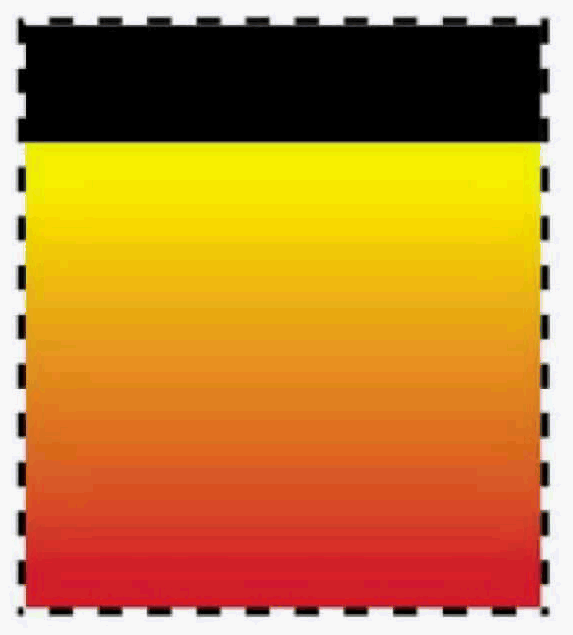In 1995, the nation’s highest court took on a case that would serve as the landmark beginning for protecting the use of color as a trademark. In Qualitex v. Jacobson, the Supreme Court determined that color, alone, could function as a trademark, thereby, setting the standard for what it would take for individuals and entities to claim rights in their specific uses of specific colors, and also opening the door for some of the biggest brands to lay claim to their colors of choice – from UPS and Coca-Cola to Tiffany & Co. and of course, Christian Louboutin.
As the Supreme Court held in its highly-cited decision, color may, in fact, function and be protected as a trademark (and thus, serve to indicate the source of a product or service) as long as it has secondary meaning. In other words, the party claiming rights in the color would have to show – via various forms of evidence – that over time consumers had come to associate their use of color with a single source. In short: without a showing of acquired distinctiveness (as opposed to inherent distinctiveness) or “secondary meaning,” no trademark rights were in play.
That has been the basis for establishing and protecting color trademarks for the past two decades, and is the basis for the U.S. Patent and Trademark Office (“USPTO”)’s Trademark Trial and Appeal Board (“TTAB”) determination in 2018 that hardware company Forney Industries’ 2014 application for a color mark – one that consists of the colors red, orange, and yellow with a black banner located near the top as applied to product packaging for welding and machining accessories and tools – could not be registered on the USPTO’s Principal Register, as the mark was not inherently distinctive, and thus, could only be registered after Forney showed that the mark had acquired distinctiveness in the minds of the consuming public.
Forney appealed the TTAB’s decision to the U.S. Court of Appeals for the Federal Circuit, maintaining its assertion that its mark is not a “color mark,” and instead, should be treated as product packaging. That distinction is significant, as it stands to remove the need to prove acquired distinctiveness, as while a color mark or a mark that consists of a combination of colors requires a showing of secondary meaning, product packaging can be inherently distinctive, and thus, registrable without proof of acquired distinctiveness.
It is against that background that the Federal Circuit issued a striking decision issued on Wednesday, holding that “a distinct color-based product packaging mark can indicate the source of the goods to a consumer, and, therefore, can be inherently distinctive.” As such, the 3-judge panel for the Washington, DC-located Federal Circuit found the TTAB had “erred by holding that a multi-color mark can never be inherently distinctive, and that product packaging marks that employ color cannot be inherently distinctive in the absence of a well-defined peripheral shape or border.”

According to the Federal Circuit’s 12-page decision, “Neither the Supreme Court, nor this court, has directly addressed whether a multi-color mark applied to product packaging can be inherently distinctive.” Pointing to Qualitex, the court held that “there is no rule absolutely barring the use of color alone” as a mark, and stated that “although Qualitex implied that a showing of acquired distinctiveness may be required before a … mark based on color alone can be protectable, it did not expressly so hold.”
More than that, the Federal Circuit determined that it is “possible that [a mark such as Forney’s] can be perceived by consumers to suggest the source of the goods,” citing Wal-Mart v. Samara Bros., in which it says that the Supreme Court held that “certain types of product packaging may be inherently distinctive source indicators.” The Fed Circuit also notes that it is “not the only court to conclude that color marks on product packaging can be inherently distinctive,” and states that its sister court the Tenth Circuit has previously determined that “the use of color in product packaging can be inherently distinctive (so that it is unnecessary to show secondary meaning)” in appropriate circumstances.”
Still yet, the court states that “Forney’s multi-color product packaging mark is more akin to the mark at issue in Two Pesos” – the 1992 restaurant design-specific case in which the Supreme Court held that trade dress can be protected on the basis of inherent distinctiveness even if there is no proof of a secondary meaning – “than those at issue in Qualitex and Wal-mart.”
“Indeed,” the court states, Forney’s mark “falls firmly within the category of marks the Supreme Court described as potential source identifiers,” asserting that “Supreme Court precedent simply does not support the [TTAB’s] conclusion that a product packaging mark based on color can never be inherently distinctive.” Accordingly, “rather than blanketly holding that ‘[c]olors alone cannot be inherently distinctive,’ the Board should have considered whether Forney’s mark satisfies this court’s criteria for inherent distinctiveness,” the Federal Circuit stated.
The Federal Circuit also took issue with the TTAB’s finding “that a color may only be inherently distinctive when used in conjunction with a distinctive peripheral shape or border,” and stated that it “erred in stating that a multi-color product packaging mark can never be inherently distinctive,” and that “to the extent [its] decision suggests that a multi-color mark must be associated with a specific peripheral shape in order to be inherently distinc- tive, that too, was error.”
The decision, which Bloomberg law states “purports to answer a novel question neither the Federal Circuit nor the Supreme Court have addressed, despite TTAB claims that the high court has,” is being criticized by academics and legal practitioners, alike, as clashing with the Supreme Court’s well-established precedent in Qualitex.
As for the implications of the decision, Christine Farley, a Professor of Law and the Faculty Director of the Program on Information Justice and Intellectual Property at American University Washington College of Law says that “the decision is [particularly] important because of the court that issued it. Having come from the Federal Circuit, it has immediate effect on application practice in the USPTO.” As for the effect for brands, one of the most “significant benefits” to come from the decision, Farley says that “will be for those companies that use color as a mark in their product design,” as while the court’s decision “is about product packaging, it provides an easy path to a registration for companies that are primarily using color in their product design,” nonetheless. As such, a “good strategy for [these companies] may be to also employ color in their packaging so that they can obtain an early registration over the color while they develop secondary meaning.”
In terms of companies like Glossier, which have been faced with pushback from the USPTO in connection with their color-specific marks, she says they are “jumping up and down” right about now.













